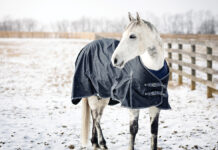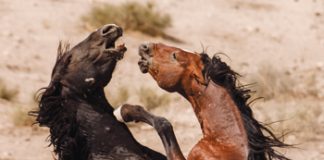There comes a time in every relationship when an honest evaluation is needed, and that includes your partnership with your horse. Think about your interactions on a regular basis. Sometimes, a horse doesn’t know how to respect personal space. Does your horse do any of the following?
◆ Walks so close when you’re leading that he shoves you from behind with his head.
◆ Has stepped on your foot when you’re leading or grooming him.
◆ Will swing his body into you when you’re grooming him or working with him while tied.
◆ Moves so close to you that sometimes you have to step out of his way to avoid being bumped or stepped on.
◆ Rubs his head on you if he has an itch.
◆ Gets very pushy when there’s a treat in your pocket or hands
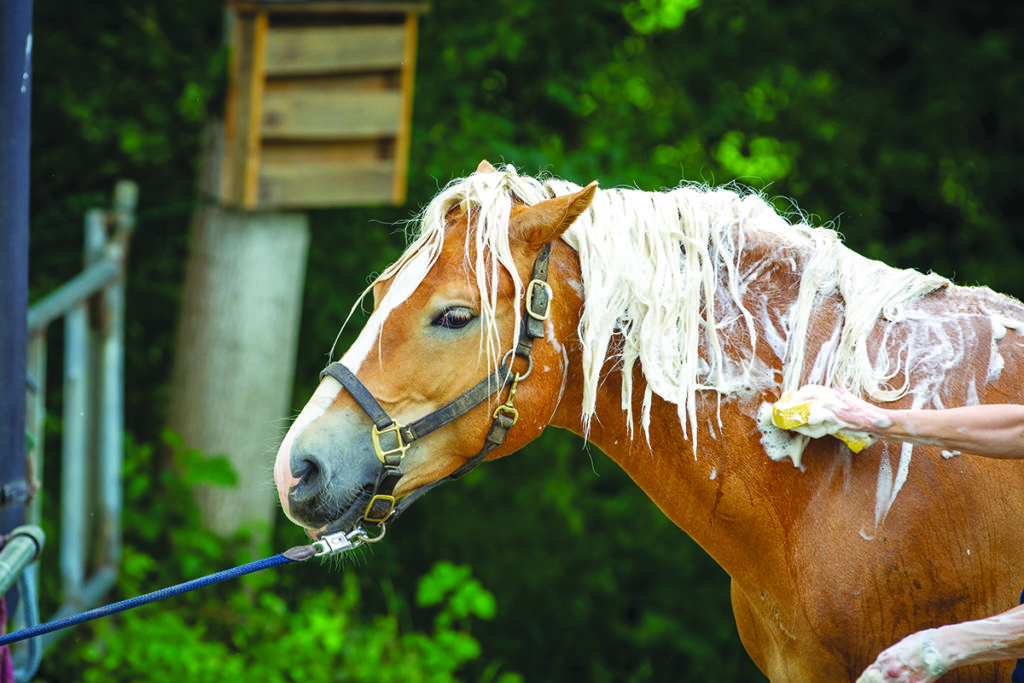
Who’s the Boss?
If you recognize more than one of these behaviors, your horse is telling you how he views your relationship. If this is his normal behavior, he sees himself as being in charge.
“If a horse is being dominant on the ground, it’s going to translate to when you get on his back,” says trainer and clinician Lynn Palm, who is based in Ocala, Fla. “If he pushes you once, next time it will be harder. If he moves into you and you have to take a step away, the next time you’ll have to take three steps.”
In addition to her own impressive performance record in the show ring, Palm’s teaching has helped countless horse owners understand how horses communicate through body language.
Palm finds there are two basic reasons that a horse is pushy and disrespectful on the ground:
◆ He’s a young horse that hasn’t been educated about boundaries, or
◆ He’s a horse that doesn’t see you as the leader in the relationship.
You might be thinking that you don’t want to be your horse’s boss—you want to be his friend and partner. But no matter how you view it, the horse’s brain is hardwired to have someone in charge.
Understanding Why
It all goes back to the fact that as prey animals, horses instinctively trust a leader to keep them safe. Palm urges owners to watch the herd dynamics of horses at pasture.
It doesn’t take long to identify the “boss mare” or “alpha” horse. She or he is the horse that all others defer to. If a horse don’t show respect to the alpha, the leader demonstrates dominance by getting in the personal space of the other horse and quickly makes him move away.
If you say, “That’s just horses being horses,” you’re right. But, your horse will treat you like another horse if you let him. He’ll do this with dominant body language, such as the actions listed earlier. A horse without personal space can be dangerous to people.
“Because of the horse’s size and strength, safety has to be No. 1 in horse ownership,” says Palm. “When horses don’t have manners, they can become unsafe, even if it’s not intentional.”
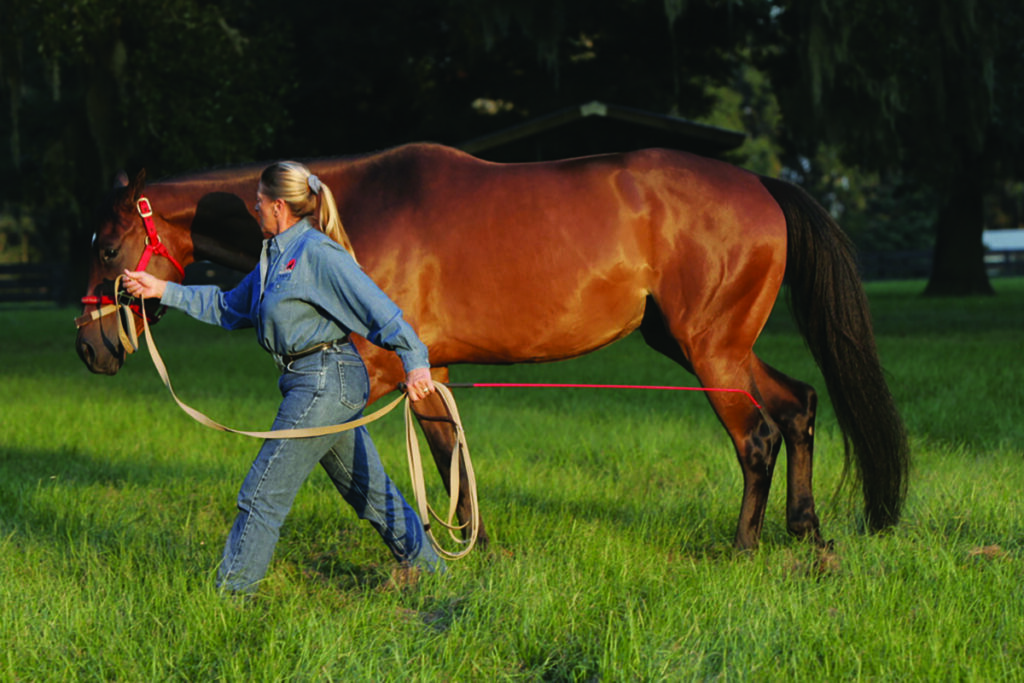
It’s up to you to teach your horse without personal space to respect you and to see you as the leader.
“On the ground, don’t allow the horse into your personal space unless you intentionally invite him in. You have to establish and maintain the boundary.”
Change It Up
Teaching this starts with the most basic interactions with your horse: catching, leading and grooming.
“If the horse is used to taking charge, initially you might have to be assertive in making him move away,” says Palm. “We’re talking manners, not punishment or making the horse afraid of you. But you have to draw a line, and the horse has to be obedient to your commands.”
When a horse doesn’t respect her space, especially if it could become dangerous, Palm uses her hands to make a firm shooing gesture toward his head and uses a stern tone with words such as “move it,” “no,” or “away.”
As soon as he moves out of her space, she stops the hand movements, softening her tone as a reward. She repeats as needed, just as the alpha horse shows dominance as often as necessary.
“What matters is the tone of your voice, not the word,” explains Palm.
How Are You Leading?
Many people slip on the halter and start walking without putting any thought into how they’re leading their horse. Leading correctly is a clear way to assert leadership.
“Never let the horse walk behind you—it’s not safe,” cautions Palm. “He can push you with his head, or if something startles him, he can jump right into you.”
As Palm explains, the horse should walk beside you, and no closer than an arm’s length away. Your shoulder should be parallel to his throatlatch or the side of his head, which should face straight ahead, allowing you to easily see his eye and ear and where his attention is focused.
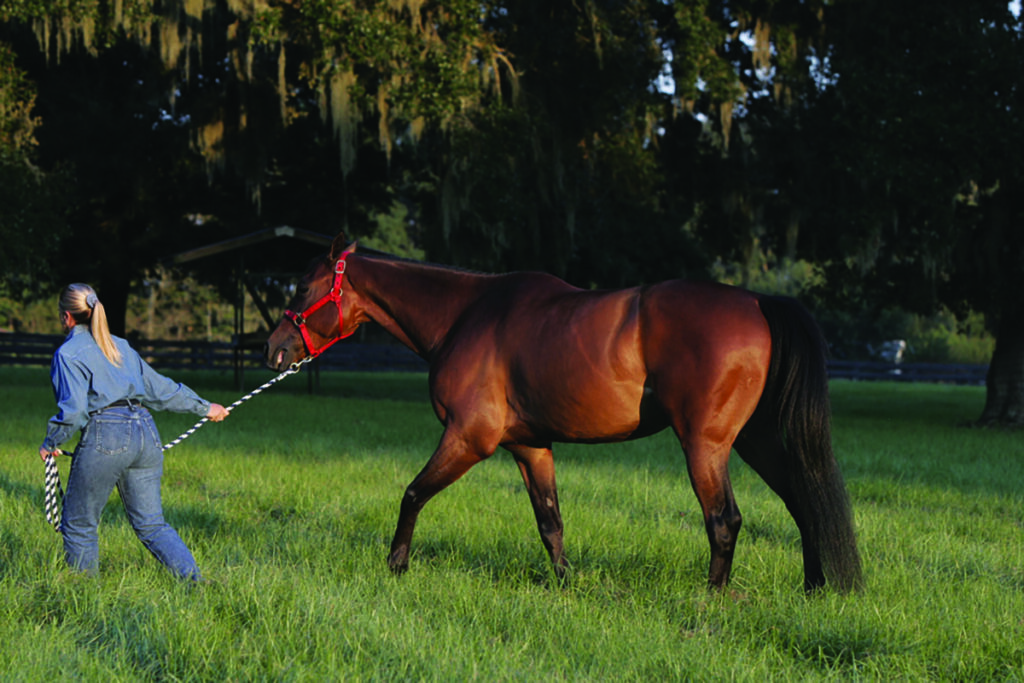
“Too many owners are always underneath their horses’ heads,” says Palm. “They’re too close and pull the horse with their hand on the lead right under his head. The more you use the lead to pull on the horse, the more you give him the opportunity to lean on, push or pull you.
“That’s why you want to control his position with your body position and voice commands,” she adds. “Your touch should give direction rather than pulling on the lead.”
When teaching any horse to lead, Palm uses a cluck sound to move forward, and an in-hand whip directed toward the hindquarters.
“If you need forward movement, step back to his shoulder and direct the in-hand whip to his hip to send him forward,” she says. “When he responds, move back into position, walking with his head parallel to your shoulder.”
She uses “whoa” for stopping, but owners can choose different commands, as long as they’re consistent. Instead of pulling back on the lead, put the in-hand whip in front of the horse’s face like a stop sign while giving your “stop” or “whoa” command.
“If he gets too close, use a pulsating touch with your hand to direct him away,” suggests Palm. “Touch the side of his head—midway between his eye and nostril—and use the pressure of a pulsating touch to move him away. Don’t release this pulsating pressure until he turns in the direction you’re asking. When he takes even one step that way, release the touch and reward him with your voice.”
Palm encourages you to practice leading and turning on both sides of your horse and in both directions.
What About Treats?
Do you have to forego feeding treats for your horse to respect your space?
No, says Palm, but she emphasizes to treat the right way, at the right time, and for the right reasons, and not as a “bribe.” She warns that over-treating can lead to pushiness, and your tone of voice should be used more than treats.
“Remember that praise from your voice and touch is often enough reward,” says Palm.
She notes that if you really want to give a treat after a good ride, don’t do it as soon as you dismount or when you’re grooming.
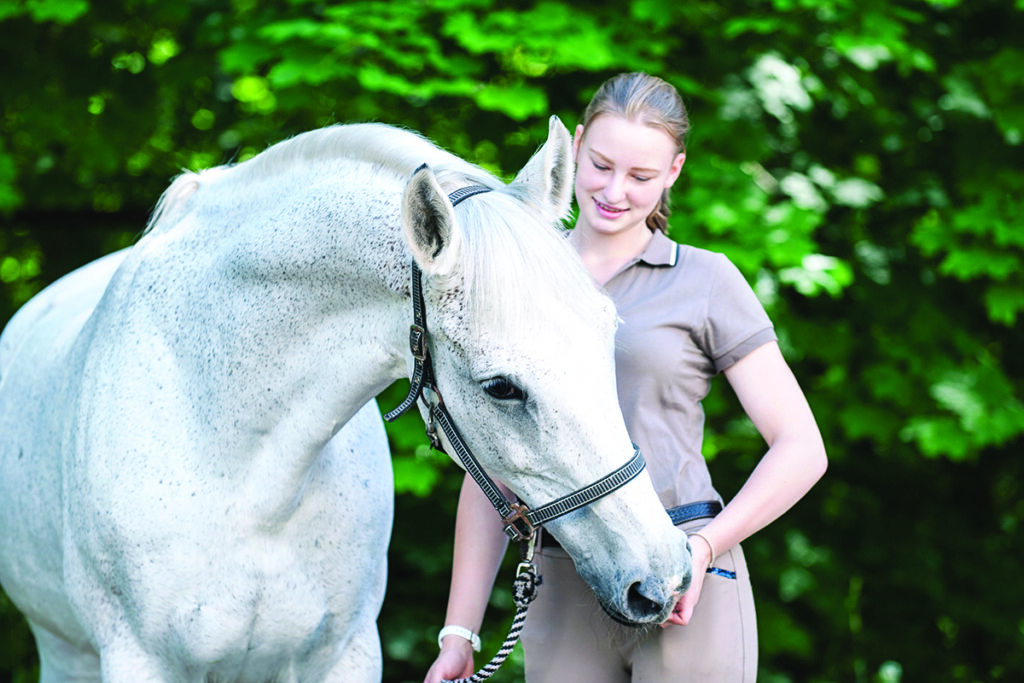
“Wait until you’re completely done and turning the horse out or putting him in his stall,” says Palm.
If you find yourself backing up when offering a treat because your horse is on top of you, this is a clear sign you need to rethink how you’re handling the treat scenario.
“You should invite your horse in for affection or a treat; he doesn’t get to demand it,” says Palm. “A better way to give a treat is to put it in the horse’s bucket instead of hand-feeding.
“When a horse is mannerly and obedient, you’re setting the precedent of having safe, enjoyable times with that horse on the ground and when you’re riding,” she adds. “Your horse will be a better friend if he respects you with manners and obedience.”
This article about teaching horses to respect personal space originally appeared in the September 2021 issue of Horse Illustrated magazine. Click here to subscribe!



